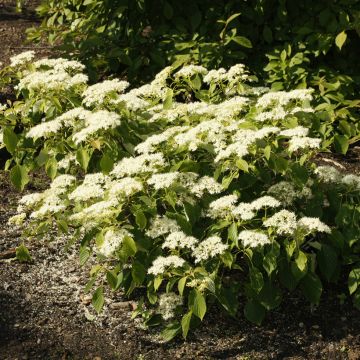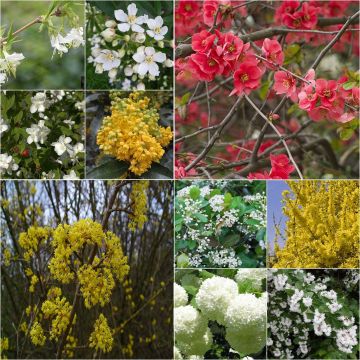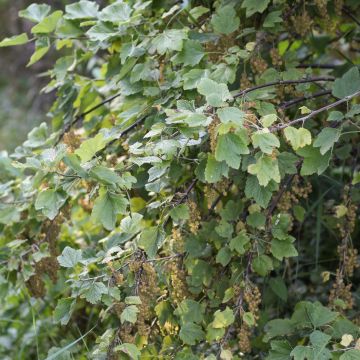

Cornus alba Nightfall - White Dogwood


Cornus alba Nightfall - White Dogwood


Cornus alba Nightfall - White Dogwood


Cornus alba Nightfall - White Dogwood


Cornus alba Nightfall - White Dogwood


Cornus alba Nightfall - White Dogwood


Cornus alba Nightfall - White Dogwood


Cornus alba Nightfall - White Dogwood
Cornus alba Nightfall - White Dogwood
Cornus alba 'VERPAALEN3' NIGHTFALL
White Dogwood, Siberian Dogwood
Special offer!
Receive a €20 voucher for any order over €90 (excluding delivery costs, credit notes, and plastic-free options)!
1- Add your favorite plants to your cart.
2- Once you have reached €90, confirm your order (you can even choose the delivery date!).
3- As soon as your order is shipped, you will receive an email containing your voucher code, valid for 3 months (90 days).
Your voucher is unique and can only be used once, for any order with a minimum value of €20, excluding delivery costs.
Can be combined with other current offers, non-divisible and non-refundable.
Home or relay delivery (depending on size and destination)
Schedule delivery date,
and select date in basket
This plant carries a 24 months recovery warranty
More information
We guarantee the quality of our plants for a full growing cycle, and will replace at our expense any plant that fails to recover under normal climatic and planting conditions.
Would this plant suit my garden?
Set up your Plantfit profile →
Description
The Cornus alba 'Nightfall' is a superb variety of bush that will appeal to gardeners looking for a colourful ornamental bush, interesting throughout the year. Its particularly dark leaves, transitioning from green in spring to a almost black purple in autumn, make it a centerpiece of the garden. Its red stems, highly visible in winter, bring brightness to hedges or beds at that time of year. Very hardy, undemanding, it finds its place in many gardens, but also in containers.
The Cornus alba Nightfall 'VERPAALEN3' belongs to the cornaceae family, like all dogwoods. This cultivar, developed in the Netherlands by Boomkwekerij Verpaalen, is known for its unique foliage. The species is native to Siberia, where it is found on the banks of the Amur River, as well as in Russia and Manchuria, in humid deciduous and coniferous forests. It is a bush that always grows near waterways, under harsh and contrasting climates that demonstrate its robustness. In spring, the leaves of 'Nightfall' appear dark green, then turn to an almost black purple in autumn. They measure about 6 to 12 cm in length and have a velvety texture, especially on the underside of the leaves, which is covered with a fine grayish film. In winter, the bare stems turn a bright red, stunning in snowy landscapes or the winter garden. The bush reaches about 1.5 m in height and width, with an upright habit and relatively fast growth. The flowering, discreet, consists of small cream-white flowers in May-June. This is followed by small white berries that sometimes persist until autumn. The Cornus alba 'Nightfall' is also distinguished by its high cold resistance (down to -30°C) and its ability to adapt to various soil types, provided they are well-drained.
Plant this dogwood 'Nightfall' in a low hedge, in a shrub bed, or as a standalone specimen in a perennial border. It combines beautifully with other shrubs with colourful foliage like the Physocarpus opulifolius 'Diabolo' for its purple leaves, or the Japanese Spirea 'Crispa' which blooms pink in summer and colours in autumn. For an even more pronounced winter effect, it can be paired with dwarf conifers such as the Picea glauca 'Conica' or with ground cover evergreen shrubs like the Euonymus fortunei 'Silverstone'. The 'Flaviramea' dogwood, with its yellow stems, also creates a superb contrast in winter.
Plant habit
Flowering
Foliage
Botanical data
Cornus
alba
'VERPAALEN3' NIGHTFALL
Cornaceae
White Dogwood, Siberian Dogwood
Cultivar or hybrid
Other Cornus
View all →Planting and care
The Cornus alba Nightfall will thrive in a fertile and humus-bearing soil, fresh, even moist, even heavy and slightly chalky. Plant it from November to March, in a sunny location to enhance the foliage colours, or at worst in bright partial shade.
Planting period
Intended location
Care
Planting & care advice
This item has not been reviewed yet - be the first to leave a review about it.
Similar products
Haven't found what you were looking for?
Hardiness is the lowest winter temperature a plant can endure without suffering serious damage or even dying. However, hardiness is affected by location (a sheltered area, such as a patio), protection (winter cover) and soil type (hardiness is improved by well-drained soil).

Photo Sharing Terms & Conditions
In order to encourage gardeners to interact and share their experiences, Promesse de fleurs offers various media enabling content to be uploaded onto its Site - in particular via the ‘Photo sharing’ module.
The User agrees to refrain from:
- Posting any content that is illegal, prejudicial, insulting, racist, inciteful to hatred, revisionist, contrary to public decency, that infringes on privacy or on the privacy rights of third parties, in particular the publicity rights of persons and goods, intellectual property rights, or the right to privacy.
- Submitting content on behalf of a third party;
- Impersonate the identity of a third party and/or publish any personal information about a third party;
In general, the User undertakes to refrain from any unethical behaviour.
All Content (in particular text, comments, files, images, photos, videos, creative works, etc.), which may be subject to property or intellectual property rights, image or other private rights, shall remain the property of the User, subject to the limited rights granted by the terms of the licence granted by Promesse de fleurs as stated below. Users are at liberty to publish or not to publish such Content on the Site, notably via the ‘Photo Sharing’ facility, and accept that this Content shall be made public and freely accessible, notably on the Internet.
Users further acknowledge, undertake to have ,and guarantee that they hold all necessary rights and permissions to publish such material on the Site, in particular with regard to the legislation in force pertaining to any privacy, property, intellectual property, image, or contractual rights, or rights of any other nature. By publishing such Content on the Site, Users acknowledge accepting full liability as publishers of the Content within the meaning of the law, and grant Promesse de fleurs, free of charge, an inclusive, worldwide licence for the said Content for the entire duration of its publication, including all reproduction, representation, up/downloading, displaying, performing, transmission, and storage rights.
Users also grant permission for their name to be linked to the Content and accept that this link may not always be made available.
By engaging in posting material, Users consent to their Content becoming automatically accessible on the Internet, in particular on other sites and/or blogs and/or web pages of the Promesse de fleurs site, including in particular social pages and the Promesse de fleurs catalogue.
Users may secure the removal of entrusted content free of charge by issuing a simple request via our contact form.
The flowering period indicated on our website applies to countries and regions located in USDA zone 8 (France, the United Kingdom, Ireland, the Netherlands, etc.)
It will vary according to where you live:
- In zones 9 to 10 (Italy, Spain, Greece, etc.), flowering will occur about 2 to 4 weeks earlier.
- In zones 6 to 7 (Germany, Poland, Slovenia, and lower mountainous regions), flowering will be delayed by 2 to 3 weeks.
- In zone 5 (Central Europe, Scandinavia), blooming will be delayed by 3 to 5 weeks.
In temperate climates, pruning of spring-flowering shrubs (forsythia, spireas, etc.) should be done just after flowering.
Pruning of summer-flowering shrubs (Indian Lilac, Perovskia, etc.) can be done in winter or spring.
In cold regions as well as with frost-sensitive plants, avoid pruning too early when severe frosts may still occur.
The planting period indicated on our website applies to countries and regions located in USDA zone 8 (France, United Kingdom, Ireland, Netherlands).
It will vary according to where you live:
- In Mediterranean zones (Marseille, Madrid, Milan, etc.), autumn and winter are the best planting periods.
- In continental zones (Strasbourg, Munich, Vienna, etc.), delay planting by 2 to 3 weeks in spring and bring it forward by 2 to 4 weeks in autumn.
- In mountainous regions (the Alps, Pyrenees, Carpathians, etc.), it is best to plant in late spring (May-June) or late summer (August-September).
The harvesting period indicated on our website applies to countries and regions in USDA zone 8 (France, England, Ireland, the Netherlands).
In colder areas (Scandinavia, Poland, Austria...) fruit and vegetable harvests are likely to be delayed by 3-4 weeks.
In warmer areas (Italy, Spain, Greece, etc.), harvesting will probably take place earlier, depending on weather conditions.
The sowing periods indicated on our website apply to countries and regions within USDA Zone 8 (France, UK, Ireland, Netherlands).
In colder areas (Scandinavia, Poland, Austria...), delay any outdoor sowing by 3-4 weeks, or sow under glass.
In warmer climes (Italy, Spain, Greece, etc.), bring outdoor sowing forward by a few weeks.



























































